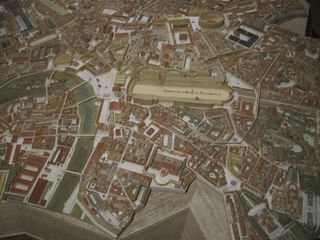Fakes
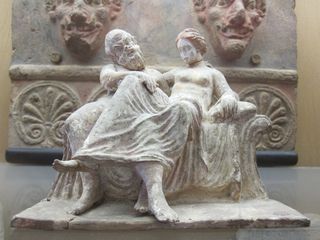
The idea of the "fake" has for some years been fashionable in classical archaeology. What's the difference between a "copy" of a sculpture (made by a enthusiastic eighteenth century sculptor) and a "forgery" (made by an equally enthusiastic and skilled sculptor -- but one who was intending to pass it off as "real")? And how do we deal with all those many pieces of "ancient" works of art, that have a bona fide ancient torso, but arms and legs courtesy of Bernini etc? To put it at its simplest, which part of the Museum do they belong in? (Sometimes, as with the Commodus bust in the Getty, we cant actually agree whether the whole thing is ancient or (early) modern..).
Anyway the "Jubilee Museum" (of the Musées Royaux d'Art et d'Histoire) in Brussels has a great little case which illustrates these issues rather nicely. It includes some obvious "souvenir" copies (like a tourist version of the sacrophagus of Scipio Barbatus), some equally obvious "fakes" -- though quite why anyone  should bother to make the weird little pig on the right, I haven't a clue.(It is supposed to be an object connected with an "Oriental Cult", and interestingly was given to the Museum by the famous Franz Cumont (it wasn't clear if Cumont knew it was fake or not).
should bother to make the weird little pig on the right, I haven't a clue.(It is supposed to be an object connected with an "Oriental Cult", and interestingly was given to the Museum by the famous Franz Cumont (it wasn't clear if Cumont knew it was fake or not).
But a particularly intriguing one was the little "Tanagra" figurine at the top. It had been thought "OK", and was now believed to be a late nineteenth-century fake. And it was interesting to think why . . . so far as I could see, it was mainly the subject matter: so close to the slightly flirtatious feel of some Tanagras, but at the same time so far (it was impossible quite to believe in that friendly satyr, putting his hand gently on the lady's knee..).
So far, so good. The trouble was that there were quite a few cases nearby without many labels in them, with apparently ancient objects on display. Or were they?
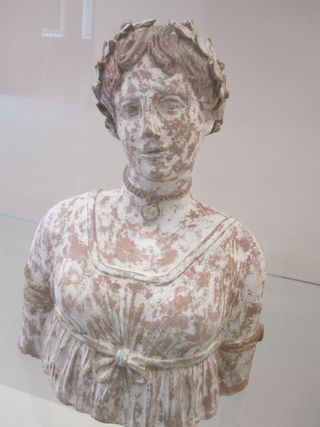
Once you had seen the "fakes" case, everything started to look not quite right. How about the rather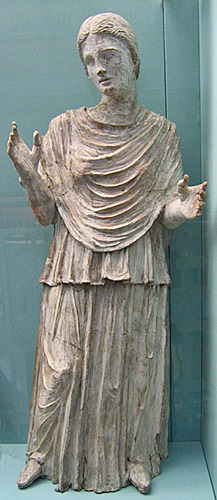 larger terra cotta above. There are things like this surviving from antiquity (some truly wonderful terracottas from Canosa, for example, which are not wholly different, as you see on the right). But is that necklace with its cameo quite right?
larger terra cotta above. There are things like this surviving from antiquity (some truly wonderful terracottas from Canosa, for example, which are not wholly different, as you see on the right). But is that necklace with its cameo quite right?
 And what about the little terracotta on the left. Again fine in a way, but on another look isnt it just a bit too NEO-classical?
And what about the little terracotta on the left. Again fine in a way, but on another look isnt it just a bit too NEO-classical?
They can't all be fakes, but once your suspicion has been aroused -- it spreads. Were they all waiting to be part of a big exhibition of fakes, and just hadn't got their labels yet?
But I dont want to give the wrong impression of the museum. There are lots of great classical things to see (and it's not exactly teeming with people). They have some great  little fragments of Roman painting from the Villa della Farnesina, as you see on the left.
little fragments of Roman painting from the Villa della Farnesina, as you see on the left. 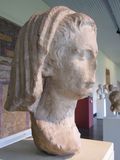
There's a classic Augustus (on the right), and a rather splendid later Roman bronze emperor, though his head doesn't belong (below on the left)
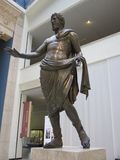 And if you are a fan of models (like I am), there is a great model of the ancient city of Rome, which almost rivals the Mussolini/Gismondi one at EUR.
And if you are a fan of models (like I am), there is a great model of the ancient city of Rome, which almost rivals the Mussolini/Gismondi one at EUR.
Mary Beard's Blog
- Mary Beard's profile
- 4076 followers


